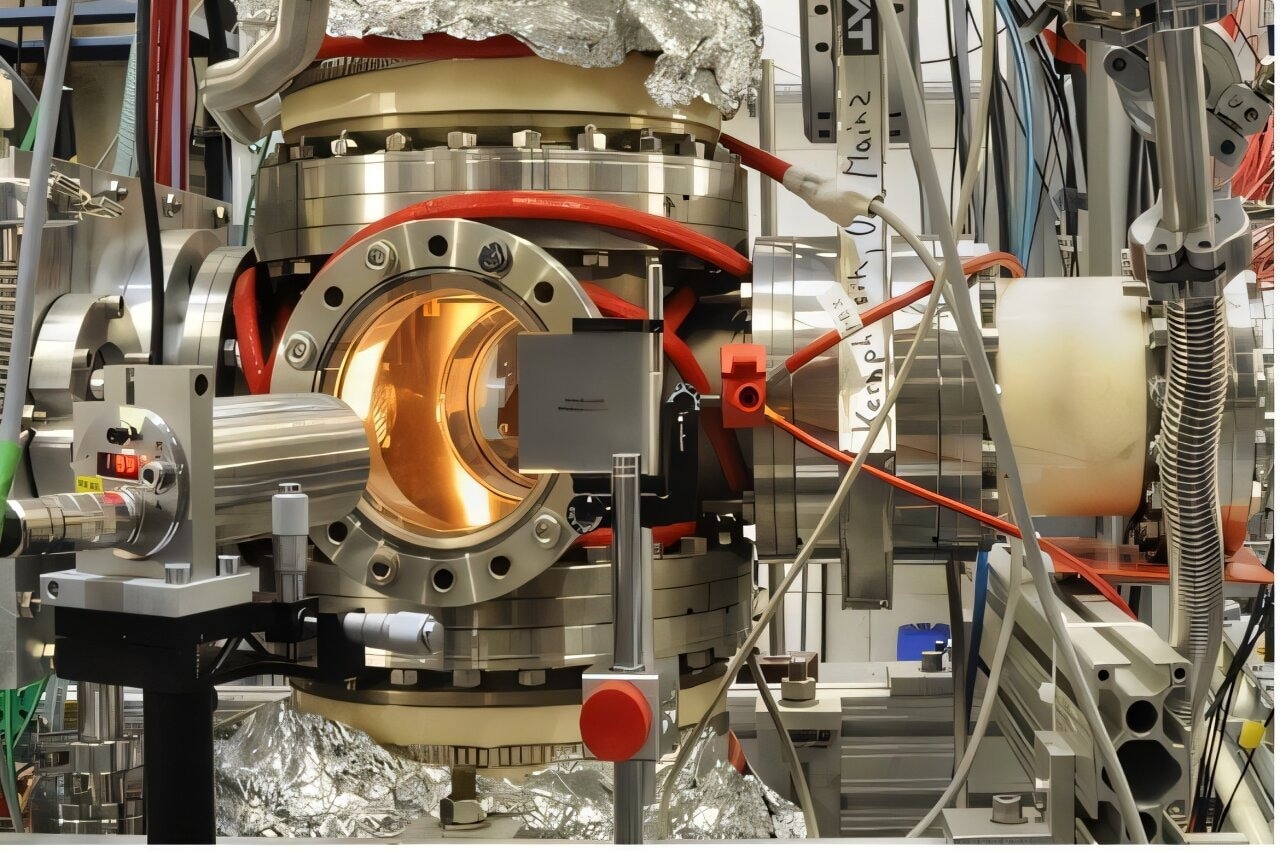Researchers from the University of Liverpool are part of an international collaboration that has made significant advances in understanding the behavior of elements at the extremes of neutron and proton numbers, pushing the boundaries of the periodic table.
 The Radiation Detected Resonance Ionization Spectroscopy setup, located downstream of the UNILAC accelerator, rotating target wheel and velocity filter, SHIP. Image Credit: University of Liverpool
The Radiation Detected Resonance Ionization Spectroscopy setup, located downstream of the UNILAC accelerator, rotating target wheel and velocity filter, SHIP. Image Credit: University of Liverpool
Their study, published in Nature, examines the nuclear structures of fermium (element 100) and nobelium (element 102) isotopes with varying neutron counts.
These superheavy elements do not exist naturally and must be synthesized using techniques such as accelerator-driven nuclear reactions or reactor-breeding mechanisms to enable study.
The research team employed laser spectroscopy to measure the nuclear radius of various fermium and nobelium isotopes.
Unlike the trends seen in lighter elements, where upward shifts occur across neutron shell closures, these superheavy elements show a smooth transition at a key neutron number. This indicates that nuclear shell effects, which typically influence the structure, become less pronounced in superheavy elements, making the nuclei resemble a deformed liquid drop.
Professor Bradley Cheal and Dr. Charlie Devlin from the University of Liverpool’s Department of Physics contributed to the nobelium experiments in this study.
Their work involved using laser equipment to analyze the atomic hyperfine structure of nobelium isotopes. This included capturing lawrencium atoms from a nuclear reaction beam, allowing them to decay into a nobelium isotope, which was then pulse-heated, resonantly ionized, and identified through its unique alpha decay pattern.
The researchers' perspective on the experimental outcomes helped unify the two aspects of the study into one comprehensive publication, addressing a broader theme of nuclear structure at the periodic table’s limits.
A perennial question in nuclear physics is to ask what happens at the extremes of neutron and proton numbers and where the periodic table may end. This study provides new answers to this.
Bradley Cheal, Professor, Department of Physics, University of Liverpool
Cheal added, “Here at Liverpool, we played an important role in the nobelium experiments that form part of this study. This work combined our expertise in laser spectroscopy, a method traditionally limited to radioactive isotopes of naturally occurring elements, with a track record at specialist facilities capable of producing the heaviest elements.”
This research expands on previous work involving Professor Cheal, published in Nature in 2016, which marked the first time laser spectroscopy had been used on nobelium. Since then, such techniques have enabled detailed analysis of nobelium's nuclear and atomic structure, including precise measurements of its ionization potential.
Journal Reference:
Warbinek, J. et. al. (2024) Smooth trends in fermium charge radii and the impact of shell effects. Nature. doi.org/10.1038/s41586-024-08062-z